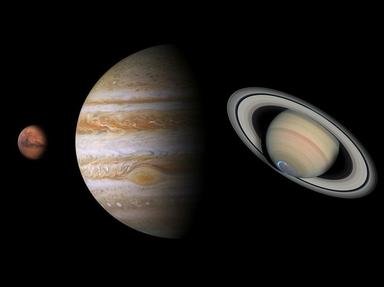Quiz Answer Key and Fun Facts
1. What was the first probe to explore Neptune?
2. What is unique about Neptune's discovery compared to the discoveries of the planets found before it?
3. What was GDS-89 (in context of Neptune)?
4. What is the interior of Neptune (likely) mostly composed of?
5. Neptune is smaller than Uranus, but it is actually more massive. Why is this?
6. What is the name of Neptune's innermost ring?
7. How long after the discovery of Neptune was its moon Triton discovered?
8. Why is Neptune's atmosphere more active than that of Uranus?
9. Neptune periodically loses and gains new Great Dark Spots. For about how much of its known existence has Neptune had a Great Dark Spot?
10. The Cassini space probe was a probe that orbited and studied the planet Saturn, however it was actually a redesign of another probe originally intended for Neptune. What was it called?
Source: Author
jonthomas
This quiz was reviewed by FunTrivia editor
WesleyCrusher before going online.
Any errors found in FunTrivia content are routinely corrected through our feedback system.

